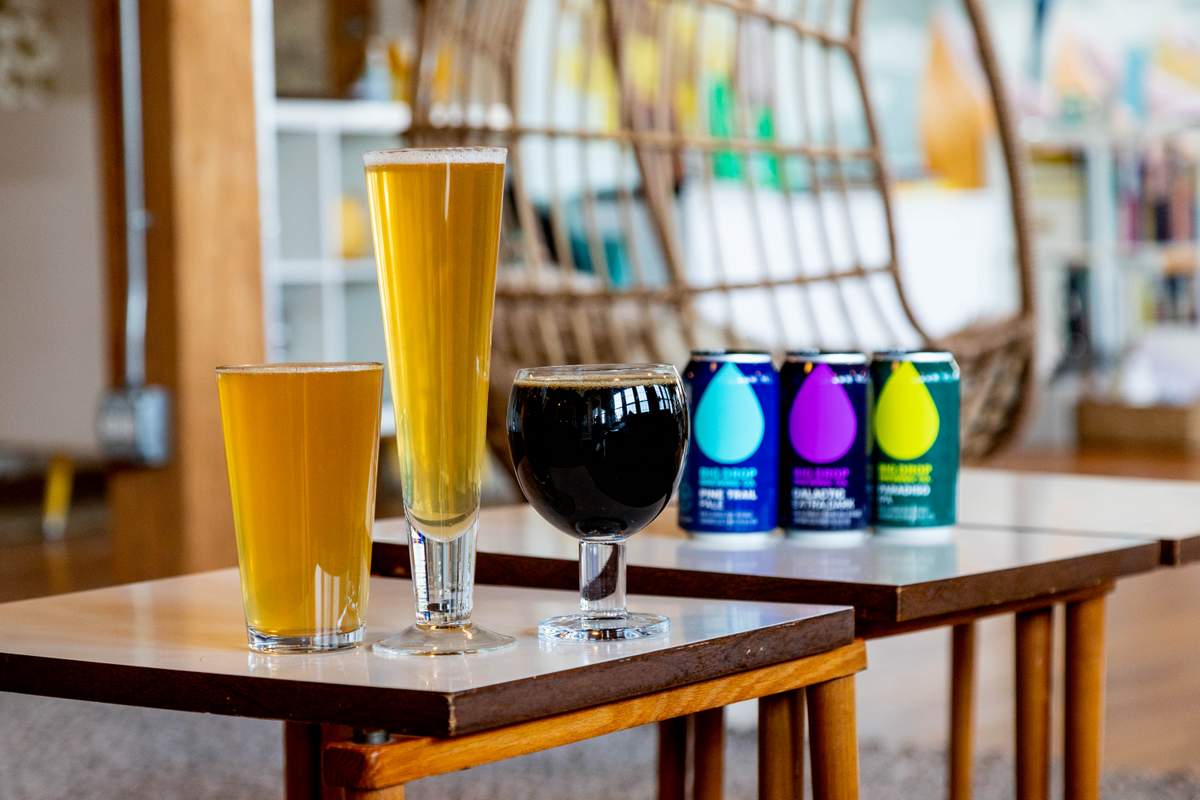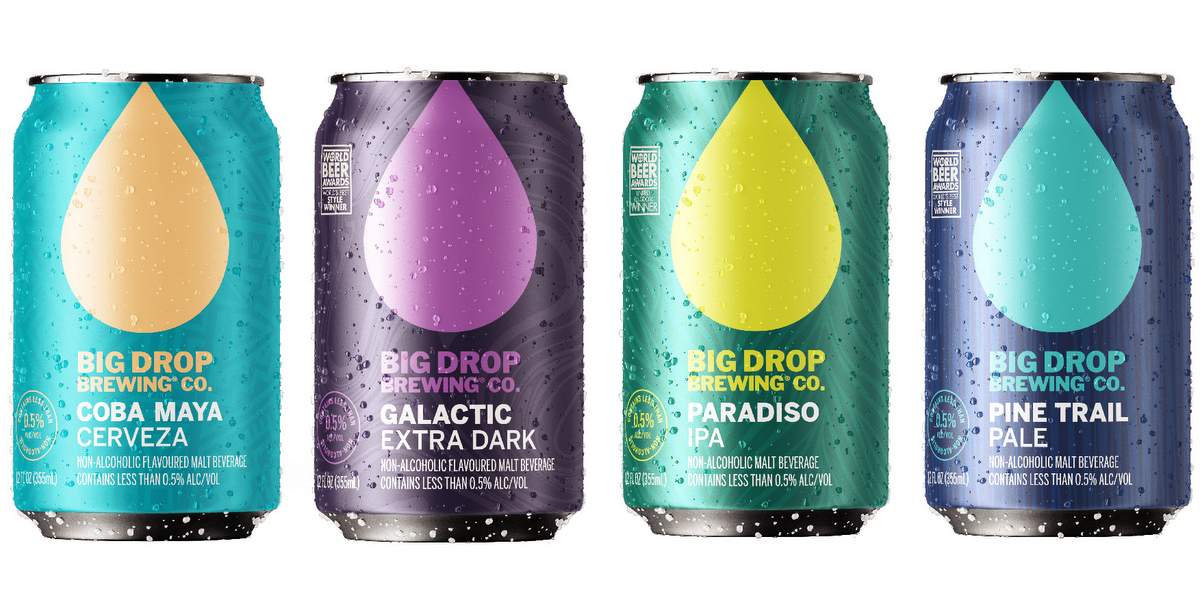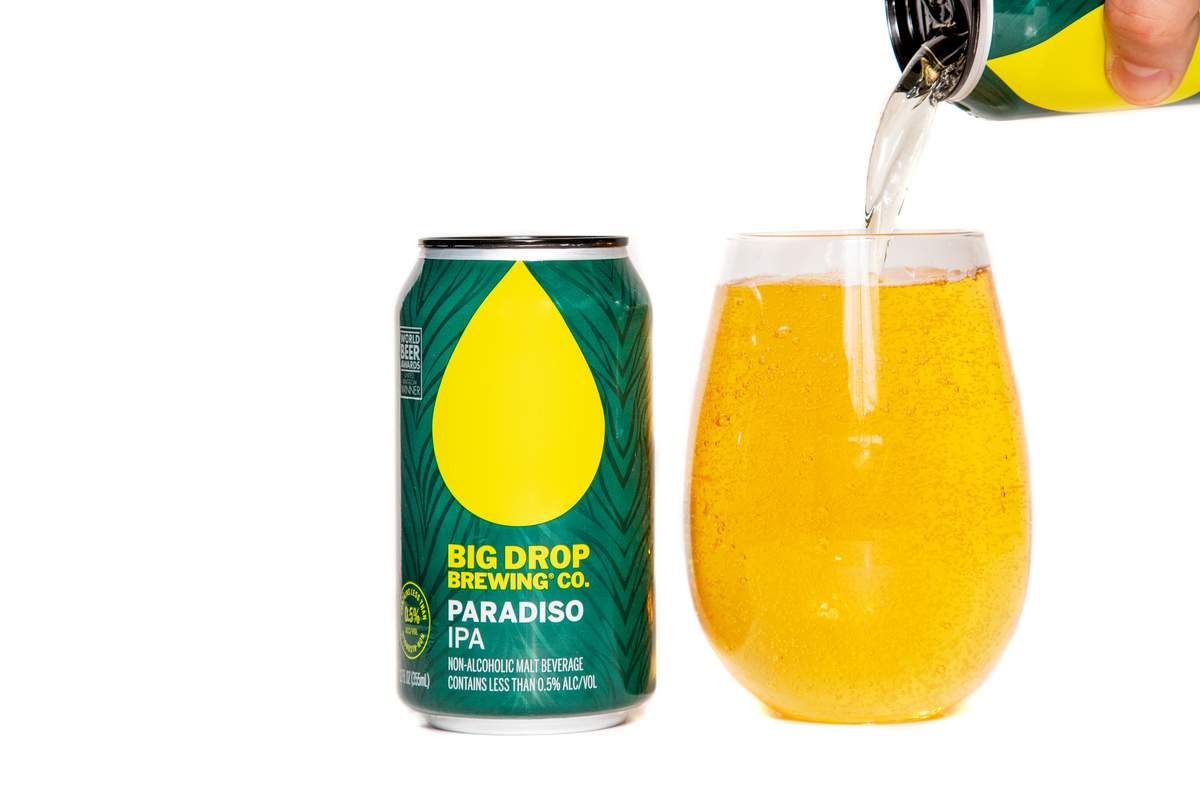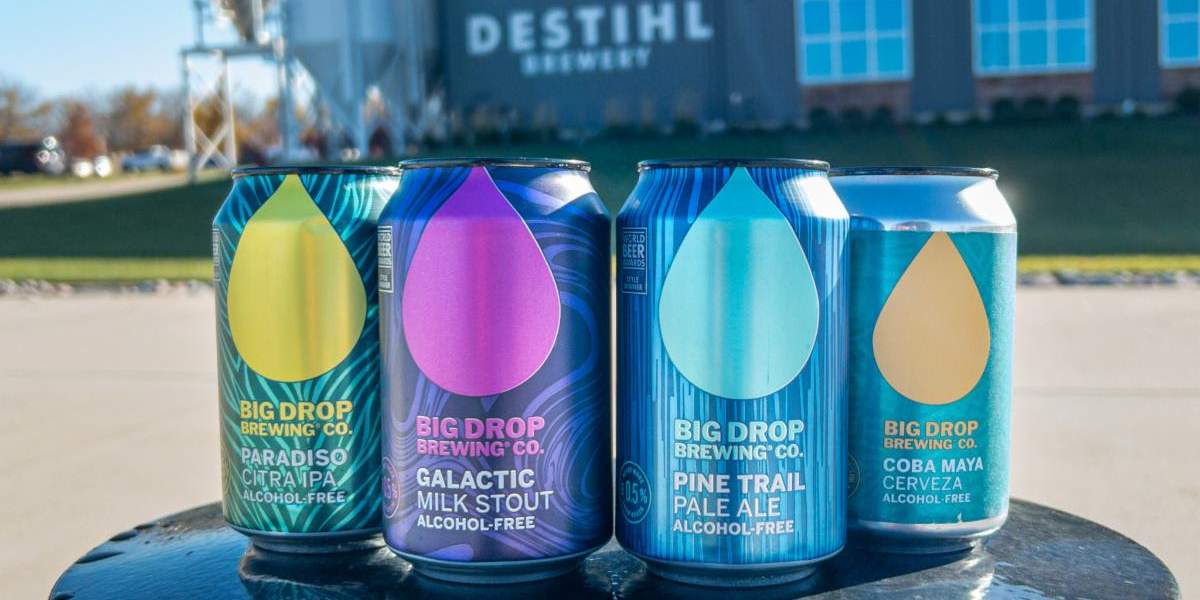
Beer is a versatile beverage. Choose from a hundred styles, and then put them in a variety of crazy glasses like you see above. I’ll take a Bamberg Weiss Rauchbier in a thistle glass, please. Just look at all the packaging options from crowlers to champagne bottles with cages and corks. Hell, beer even has seasons. Need more proof? Less? Beer doesn’t even need booze to be great. The recent surge in low- and no-alcohol beer brands has shown that (once again) innovative craft brewers can reinvent the beer classic, taking a category defined by its lack of ABV to one defined by flavor, variety and crushability.
There are many factors at work here. The traditional beer drinker is getting older and drinking less alcohol. Consumers are rightfully more concerned about health, and they’re often willing to pay more for food and drink that is specifically marketed towards it. There is an increase in demand for low-alcohol and no-alcohol items from folks with health illnesses. Non-alcoholic beer is even gaining traction among athletes as a recovery drink. There are lots of scenarios for a NA beer. Here’s a popular one for me: Say you’re at a tradeshow or business social. What are you sipping if you’re going alcohol free?
“[In the past], you either had sparkling water, hot drinks or very sugary soft drinks,” said James Kindred, cofounder of Big Drop Brewing Co. (an NA beer maker), during a virtual beer tasting a few weeks back. “None of those will give you an entertaining or enjoyable afternoon in the pub or anywhere else. There’s really no point where you say, ‘Oh, I’d really fancy a fourth pint of Coke.”
It’s true. It’s also truly amazing how far this category has come in the last few years. From our “2022 Beer Branding Trends Part 2: Beyond Beer” article by CBB contributor Isaac Arthur:
In the past, if you were drinking a non-alcoholic beer, it was because you were a recovering alcoholic. It was an awkward scarlet letter. Now, it’s an opportunity to signal that you’re a health conscious and responsible adult. Drinking is no longer all or nothing. Why be on the wagon when you can be “Sober Curious.” From a branding and positioning (and social) standpoint, the destigmatization on NA beer is one of the most amazing aspects of this movement.
Athletic Brewing Cofounder Bill Shufelt has said that 80% of Athletic drinkers also drink alcohol through the week). This is entirely anecdotal, but I know half a dozen people who have started drinking NA offerings alongside beer. Whether as a pacer, or to earn a “credit” to offset one of their debits in the aforementioned metaphor. And I think this is where this segment’s growth will come from — not from a new surge of teetotalers who still need their Citra fix. But regular folks who are making healthier decisions.
Consider non-alcoholic beer maker Athletic Brewing was the 27th biggest craft brewery in America in 2021. Need another signal the market has arrived? I’m suddenly a big fan. My personal favorites come from English brands: BrewDog’s Elvis AF and Big Drop’s Paradiso IPA and Galactic Extra Dark. Unfamiliar with the latter? Launched in the United Kingdom in 2016 by Cofounders James Kindred and Rob Fink, Big Drop lays claim as the world’s first brewer dedicated to alcohol-free beer.
“We are also the most awarded brewer in the U.K.,” said Kindred. “That’s not nonalcoholic brewers. That’s across any type of brewer. We’ve got the credentials. We’ll pick those awards up against full strength beer, because when you are going into a beer competition, they’re not sitting there looking at the ABV. They’re looking at the quality. They’re looking at the balance. They’re looking at the care and attention that’s going to the product, so we’ve beaten 6 percent IPAs and we’ve beaten 6.2 percent specialty stouts.”
Big Drop beers and distribution

Big Drop has gone on to win more than 85 major international beer awards, including seven Gold Medals from the U.S. Open Beer Championship and four World’s Bests from the World Beer Awards. Big Drop Brewing launched in the United States in 2021 after years of success in its U.K. home market. Some stats: U.K. growth year-over-year was 139 percent in 2021, and U.S. growth was 74 percent year-over-year. Big Drop contract brews its batches through a network of brewing partners worldwide. The company is brewing fresh in Chicago via a partnership with Great Central Brewing Co. In America, it currently offers four of the best NA beers on the market: Paradiso (IPA), Pine Trail Pale (pale ale), Galactic Extra Dark (stout) and the new Coba Maya Mexi-Style (a refreshing light lager). The latter is made for summer sipping.
“The Coba is a lawnmower beer, Mexican cerveza or an international lager,” explained Big Drop Brewer Johnny Clayton during the tasting. “Those German noble hops give it a little bit of a European heritage. It’s so light. It’s only 11 IBUs. It’s all about the balance. I always describe the Coba as a session beer, but by default non-alcoholic beers are infinitely sessionable, so this is the ultimate session beer.”
Big Drop beers still have trace amounts of alcohol with a 0.5 or below ABV. That’s one differentiator in the market. There are a number of ways to make NA beer – dealcoholization, limited fermentation, specialty yeast strains and beyond. A big question is: Do you brew the beer to have trace amounts of alcohol or do you brew the beer and extract the alcohol out using something like a reverse osmosis system?
“We are naturally brewing it to be less than 0.5 percent,” explained Kindred. “We’re taking nothing away from it. You’ve got all the flavor in there.”
Your next read? Maybe our Sober Up series of investigative reports. Check this out. “Sober Up: The nascent Michigan hop industry won’t survive without your help.”
“The main thing I suppose is our choice of yeast,” continued Clayton. “I’ve always called it a lazy yeast. There are a few strains out there which don’t work as hard. They don’t have the capacity to break down sugar to alcohol like other yeasts. I naturally honed in on one of the two strains that do what we need to with other parameters, which is a lot of temperature changes and other things without getting too technical. If you imagine you’ve got a cake — like a finished cake that you’ve baked in an oven. Then you extract the sugar out of it, coming up with this rather strange product. We bake it in the oven and when it comes out, it’s done. We’re not extracting anything. It’s just designed to finish at 0.5 [percent ABV].”
Can you have some? Big Drop is available in over 20 countries. In America…
“We’re currently in seven states — Illinois, Minnesota, Michigan and then in the East Coast — Massachusetts, New Hampshire, Maine and Rhode Island,” said Dane Lewandowski, territory manager at Big Drop. “What’s also unique about non-alcoholic beer is that we have direct-to-market access with our partner in Better Rhodes.”
Big Drop beer is available nationally through the Better Rhodes marketplace, which hails as America’s largest all-NA beverage e-commerce website. That’s where I buy it. The brand is only available in a packaged can format now and not via draft, but it’s got resources and brainpower. Big Drop has attracted a total of $9M in equity investment to help boost its U.S. expansion and its board of advisors now includes Mark Hunter, the former global CEO of Molson Coors, and Stefan Orlowski, former president of Europe for Heineken (the latter has a pretty darn popular NA product called Heineken O.O).
New ideas will be important as this segment continues to shift in new directions.
“When Rob and I started, we were the target audience,” said Kindred. “It was 30-something dads who ran their own business, who had busy lifestyles, were particularly time poor and didn’t have time for too much alcohol in their lives because there was stuff to do. But there’s a million different reasons why people might want a great non-alcoholic product and why it might fit into their lifestyle. I think as people are starting to open up to try out the drinks, particularly in the craft market over here [in America], there are similarities. People are looking for choice, and they’re looking for breadth of product.”
The near future of NA beer

Most beer analysts think low- and no-alcohol will continue to grow. Here’s Bart Watson, Brewers Association economist, from a press conference in April discussing the top 50 biggest craft breweries by sales volume:
“Package sales generally fell in 2021 across the board in the beer category, and the NA sector is the exception,” said Watson. “It took share within off-premise sales. You know, it’s still a pretty low share. I think in the last IRI scan data I looked at it was 0.6 share. So, a little bit more than one out of 200 beers sold are now non-alcoholic beers, but that’s up a tenth of a share point. That’s 20 percent share growth from the year before…
“In presentations I’ve been giving to craft brewers, I’ve been highlighting non-alcoholic beer,” he continued. “It’s difficult to produce. You know, it’s clearly challenging to make delicious NA beers, but companies are increasingly doing it. I think it’s one area where small brewers can effectively play as that category shifts from one that is defined by its lack of alcohol to one that’s defined by things like flavor and variety that craft brewers have long done very, very well.”
Big Drop sees the potential, but it also understands the need for balance in attack.
“We’re not looking to go in and absolutely storm the market,” said Kindred. “It’s all about making sure we’ve got the quality there — fantastic relationships with our distributors and our partners. Eventually we will grow out — once we’ve got the model right — but at the moment it’s about our proving grounds in the Midwest.”





Big Drop Brewing Co US says
👏👏👏👏